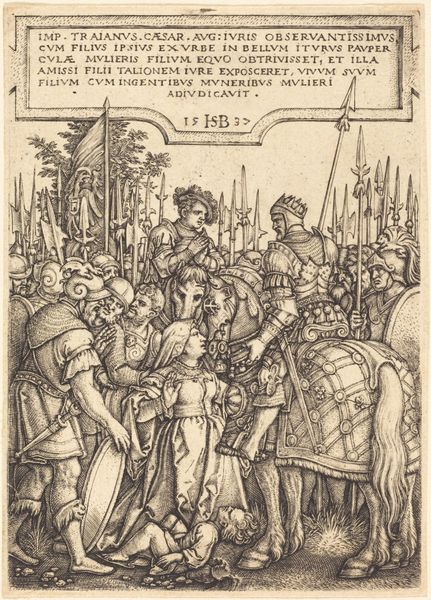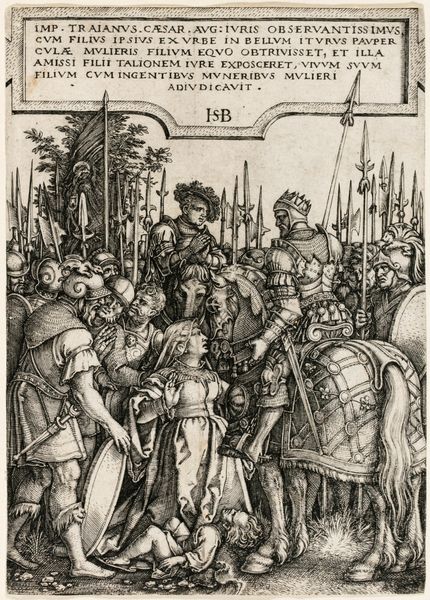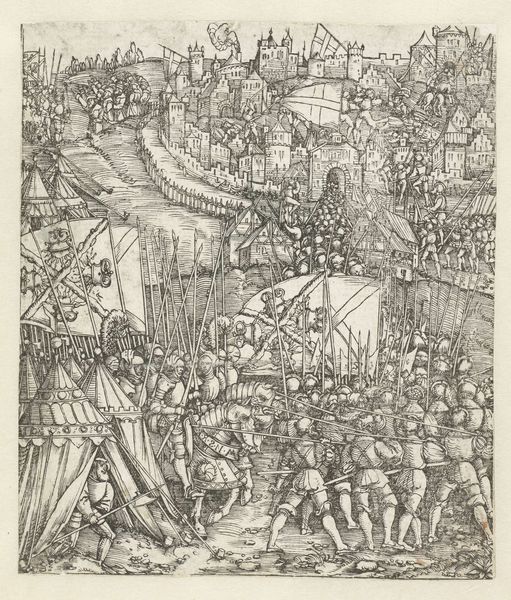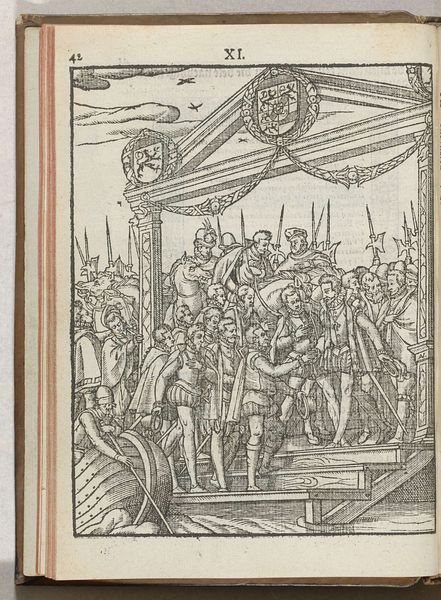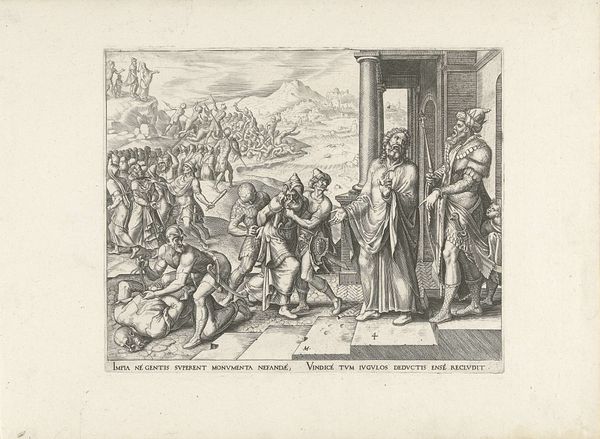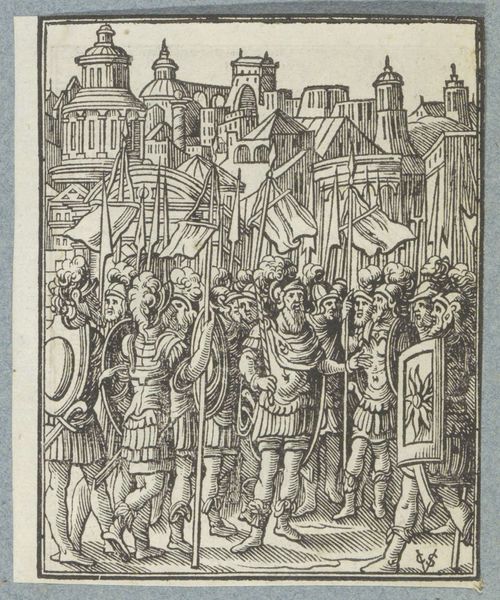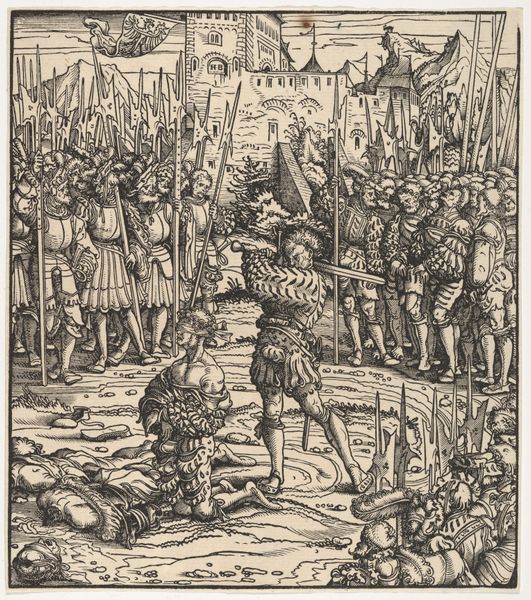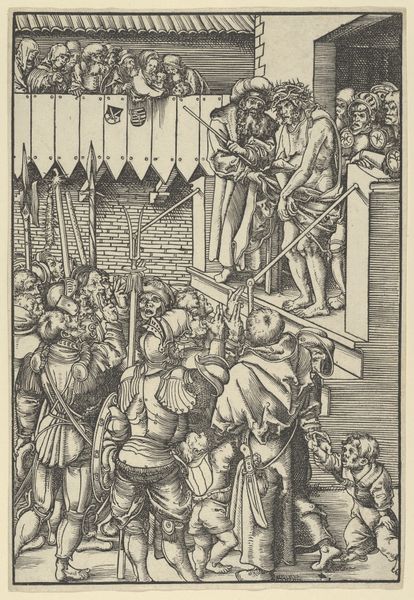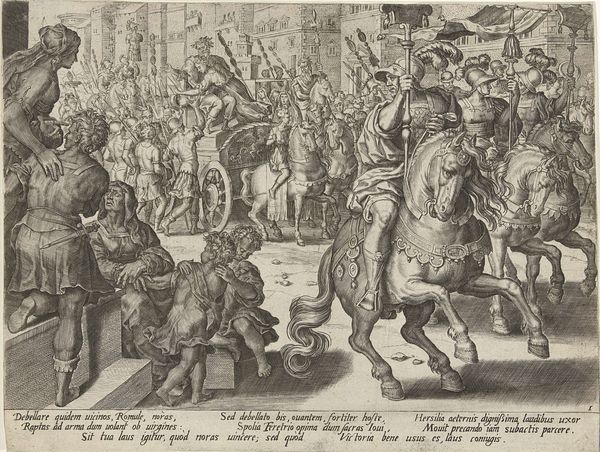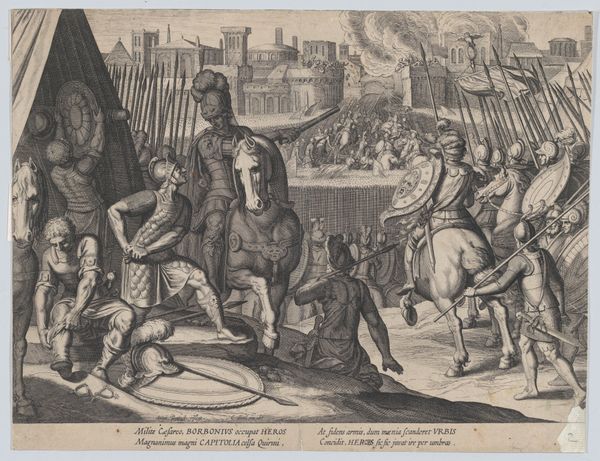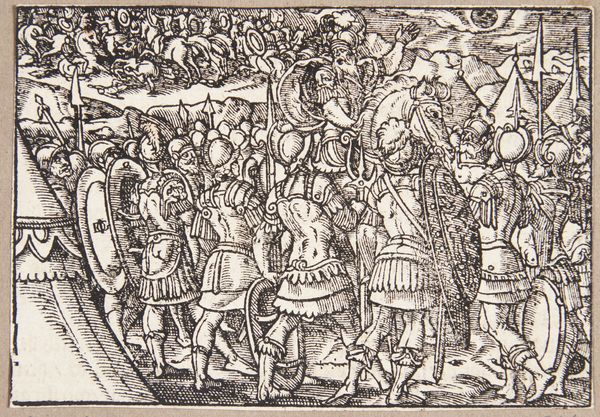
print, engraving
#
medieval
#
narrative-art
# print
#
figuration
#
line
#
history-painting
#
engraving
Dimensions: height 112 mm, width 97 mm
Copyright: Rijks Museum: Open Domain
This small print, “The Justice of Trajan,” was made around 1622 by an anonymous Dutch artist using the technique of engraving. An engraver uses a tool called a burin to carve lines directly into a metal plate, usually copper. This is a subtractive process, demanding meticulous skill and control. Consider how the engraver has used these incised lines to create light and shadow, volume and texture. Look at the way the lines vary in thickness and density to describe the folds of fabric, the sheen of armor, and the expressions on the faces of the figures. Each line is a deliberate act, reflecting hours of labor, and the final print is the result of a carefully planned and executed process. The very act of engraving, with its emphasis on precision and control, mirrors the themes of justice and order depicted in the image. The labor-intensive nature of the process also resonates with broader social and political issues of the time, highlighting the value of skilled craftsmanship and the rewards of careful planning in a chaotic world.
Comments
No comments
Be the first to comment and join the conversation on the ultimate creative platform.
